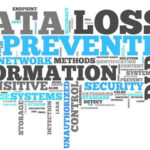
In today’s digital age, maintaining the integrity of data is crucial for businesses, organizations, and individuals alike. Data integrity refers to the accuracy, consistency, and reliability of data throughout its lifecycle. Safeguarding data integrity ensures that information remains unaltered, trustworthy, and protected against unauthorized modifications or corruption. In this article, we explore some of the most secure methods for ensuring data integrity, empowering you to establish a strong foundation of data security.
- Encryption: Encryption is a powerful method for protecting data integrity. By encrypting data, information is transformed into an unreadable format using cryptographic algorithms. Encryption ensures that even if unauthorized individuals gain access to the data, they cannot decipher or modify it without the encryption key. Implementing strong encryption protocols, such as AES (Advanced Encryption Standard), helps prevent unauthorized tampering with sensitive data, thereby ensuring its integrity.
- Regular Backups: Regularly backing up data is an essential practice for preserving data integrity. Backups create additional copies of data at different points in time, enabling recovery in case of accidental deletion, data corruption, or cyber attacks. By maintaining up-to-date backups stored securely, organizations and individuals can restore their data to a known and reliable state, ensuring its integrity remains intact.
- Access Controls and Authentication: Implementing robust access controls and authentication mechanisms plays a crucial role in maintaining data integrity. By employing strong passwords, multi-factor authentication (MFA), and user permissions, organizations can prevent unauthorized access to sensitive data. Strict access controls limit the number of individuals who can modify or manipulate data, reducing the risk of data integrity breaches.
- Data Validation and Error Checking: Data validation and error checking mechanisms are vital for ensuring the accuracy and integrity of data. Implementing validation rules and checksums allows for verifying data integrity during input, processing, and output stages. These mechanisms detect any inconsistencies, errors, or unauthorized modifications in the data, ensuring its integrity is preserved throughout the system.
- Hash Functions: Hash functions play a significant role in ensuring data integrity. A hash function generates a unique fixed-size output (hash value) for any given input data. By comparing the hash value of the original data with the computed hash value of the received or stored data, one can determine if any alterations or corruptions have occurred. Hash functions are commonly used in digital signatures, data integrity checks, and detecting data tampering.
- Digital Signatures: Digital signatures provide a robust method for ensuring data integrity and authenticity. A digital signature is a cryptographic technique that verifies the origin and integrity of digital documents or messages. It uses public-key cryptography to create a unique digital signature that can be verified by the recipient. Digital signatures provide assurance that the data has not been tampered with and that it originated from the expected source.
- Data Auditing and Logging: Implementing data auditing and logging mechanisms enables organizations to track and monitor data access, modifications, and transfers. Detailed logs capture important information such as user activities, system events, and data changes. Regularly reviewing these logs allows for identifying any unauthorized or suspicious activities that may compromise data integrity. Data auditing and logging play a crucial role in ensuring transparency, accountability, and early detection of data integrity breaches.
Ensuring data integrity is a paramount concern in today’s data-driven world. By implementing robust methods such as encryption, regular backups, access controls, data validation, hash functions, digital signatures, and data auditing, individuals and organizations can establish a strong foundation of data security. These methods provide layers of protection against unauthorized modifications, data corruption, and malicious activities, safeguarding the accuracy, consistency, and reliability of data throughout its lifecycle. Remember, a comprehensive approach to data integrity is essential for maintaining trust, compliance, and data-driven decision-making.


Leave a Reply